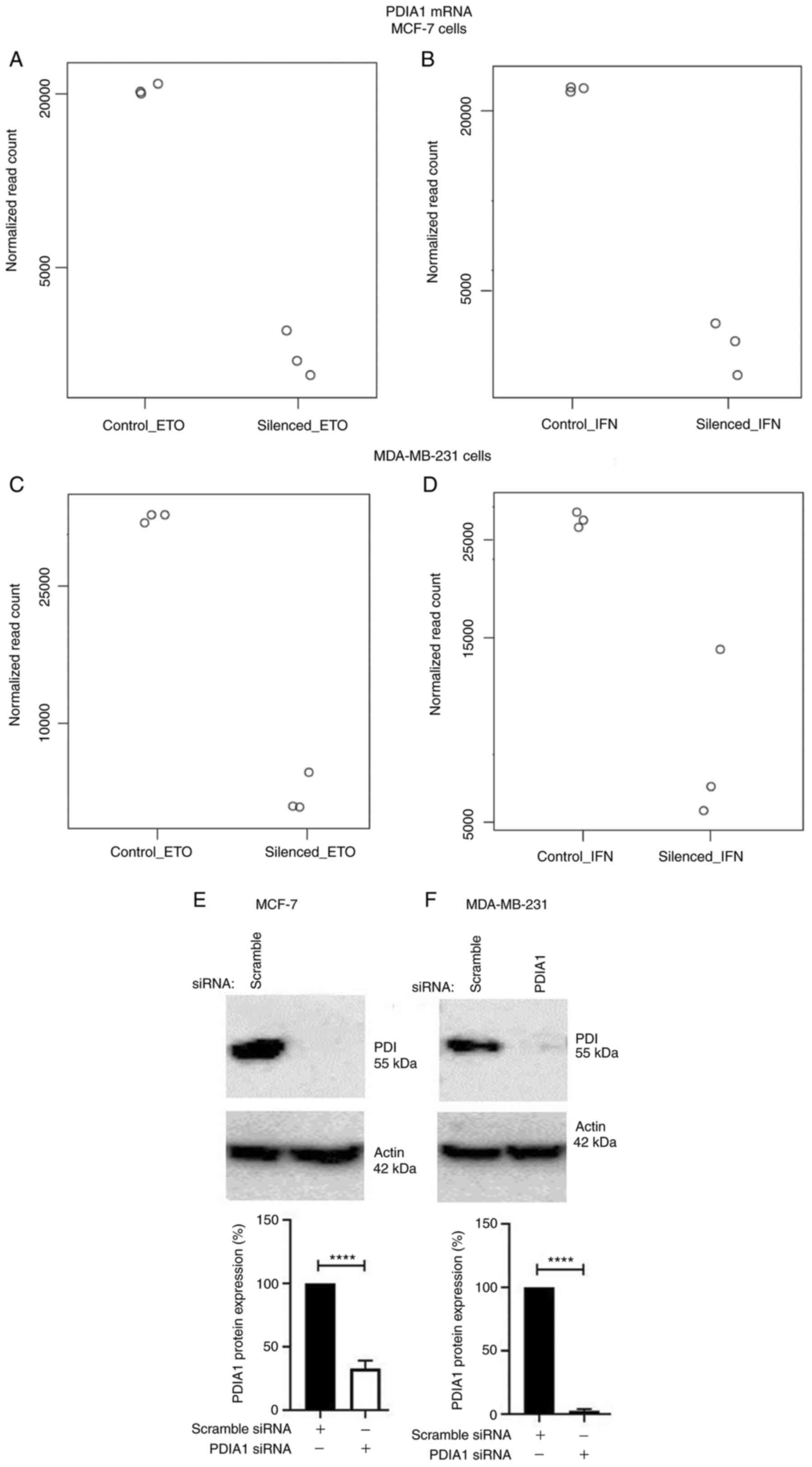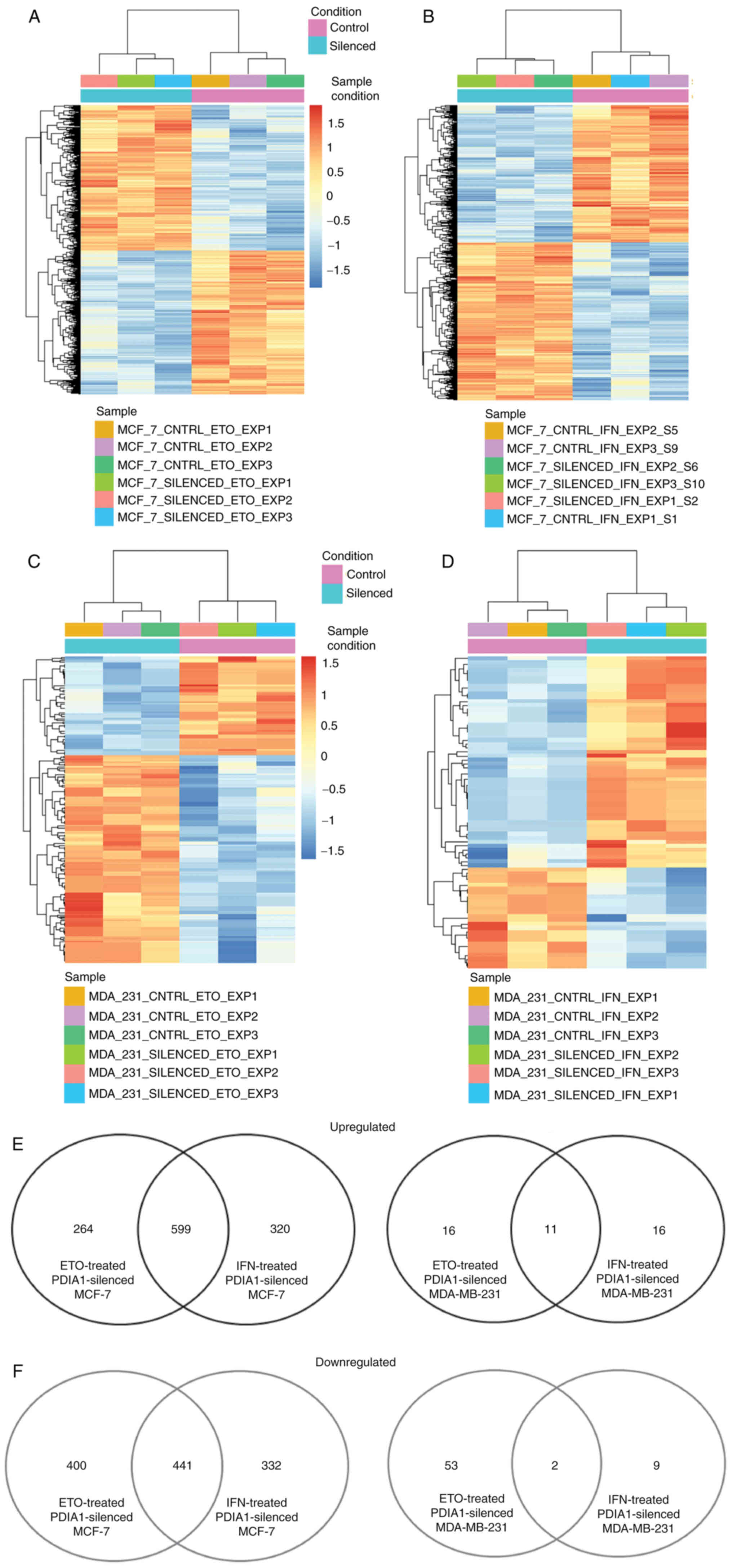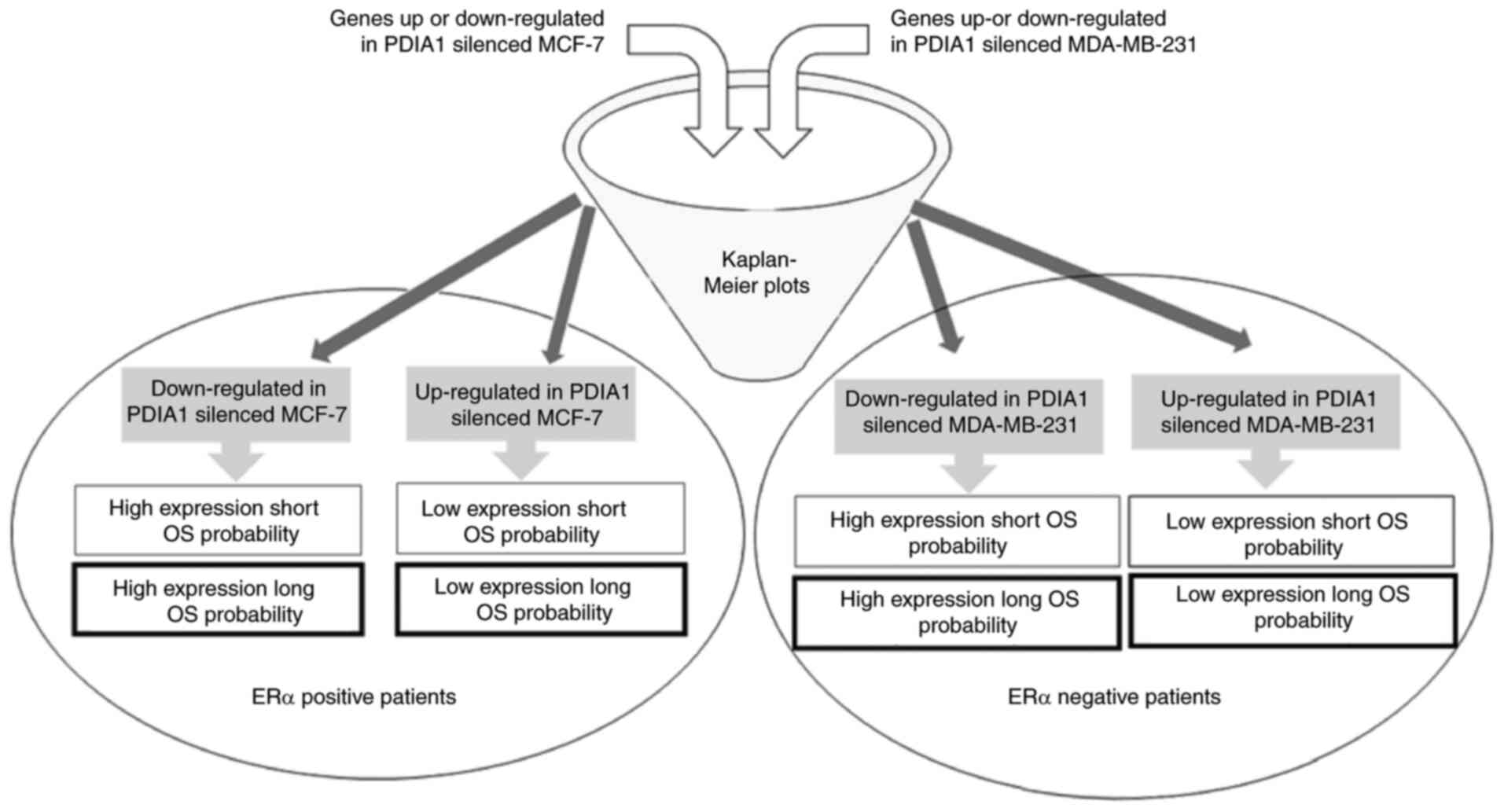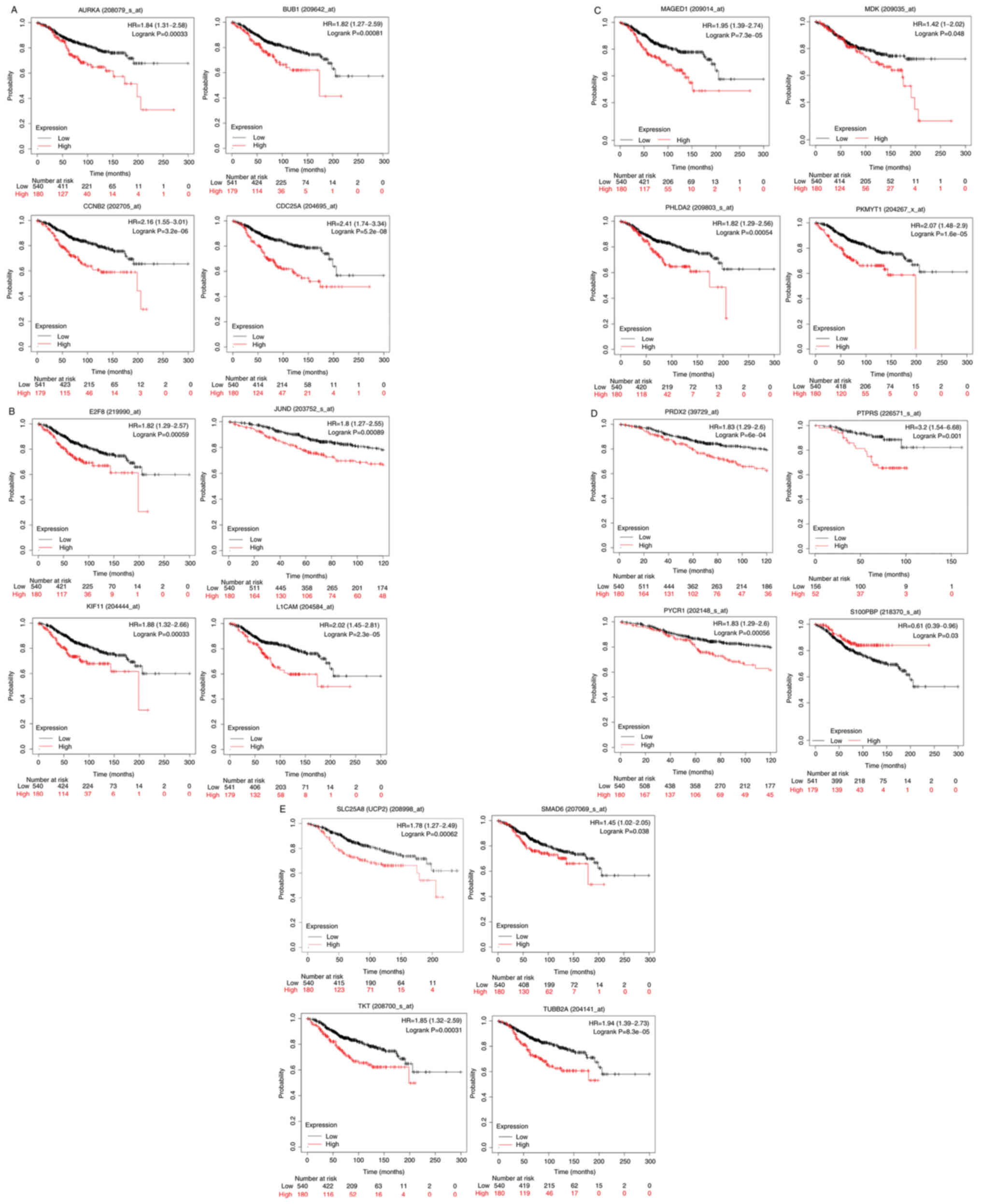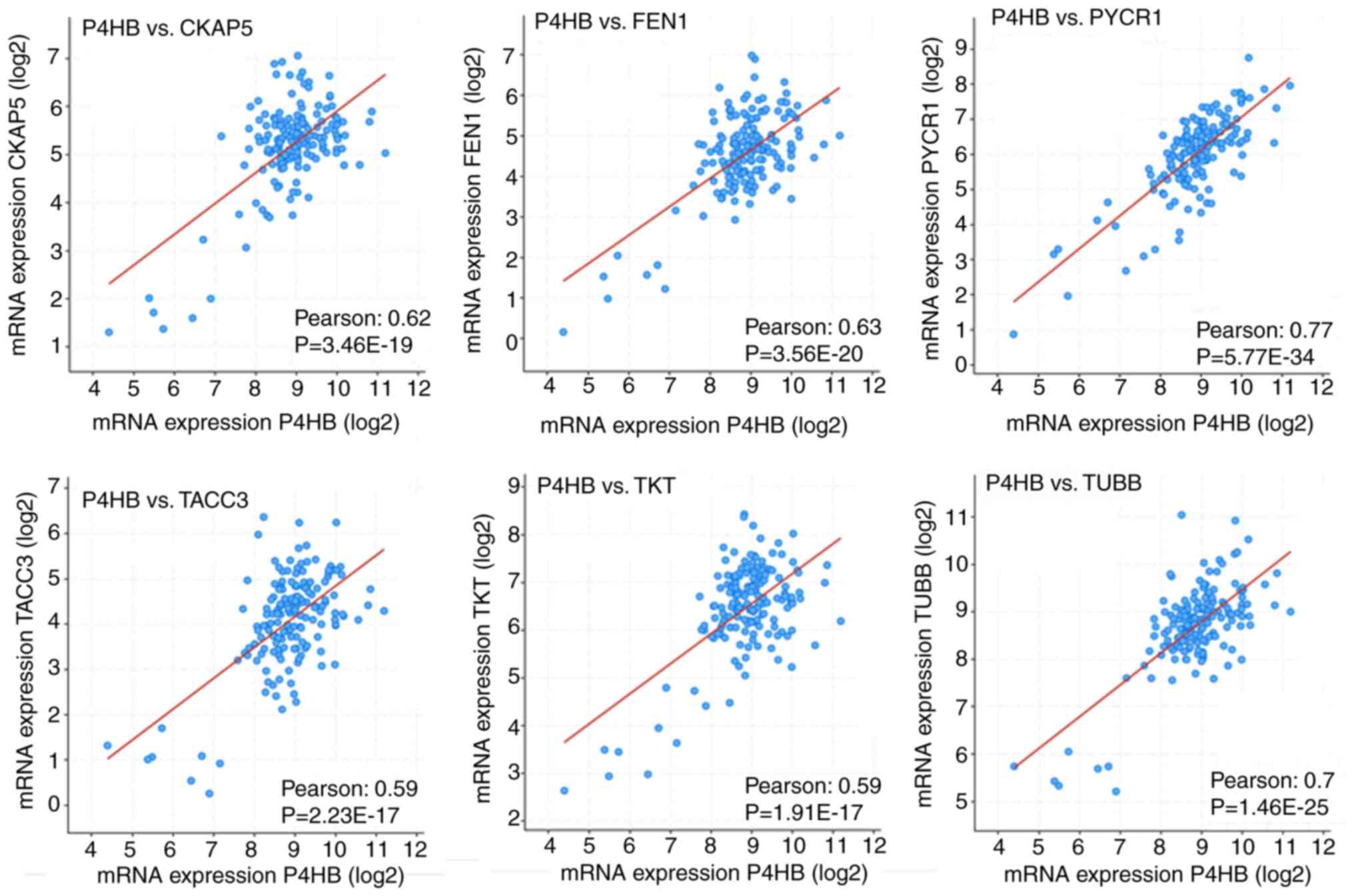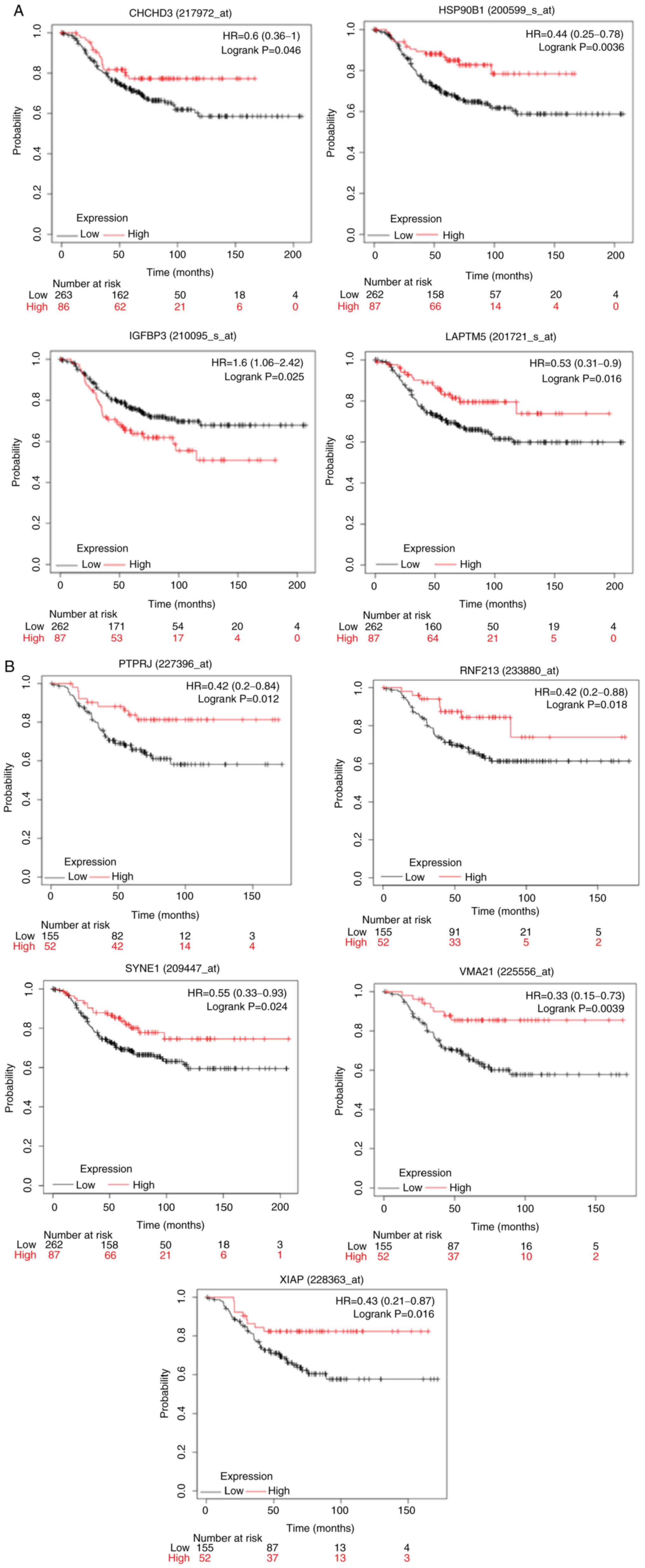|
1
|
Riemer J, Appenzeller-Herzog C, Johansson
L, Bodenmiller B, Hartmann-Petersen R and Ellgaard L: A luminal
flavoprotein in endoplasmic reticulum-associated degradation. Proc
Natl Acad Sci USA. 106:14831–14836. 2009. View Article : Google Scholar : PubMed/NCBI
|
|
2
|
Moretti AI and Laurindo FR: Protein
disulfide isomerases: Redox connections in and out of the
endoplasmic reticulum. Arch Biochem Biophys. 617:106–119. 2017.
View Article : Google Scholar
|
|
3
|
Hudson DA, Gannon SA and Thorpe C:
Oxidative protein folding: From thiol-disulfide exchange reactions
to the redox poise of the endoplasmic reticulum. Free Radic Biol
Med. 80:171–182. 2015. View Article : Google Scholar
|
|
4
|
Alhammad R, Khunchai S, Tongmuang N,
Limjindaporn T, Yenchitsomanus PT, Mutti L, Krstic-Demonacos M and
Demonacos C: Protein disulfide isomerase A1 regulates breast cancer
cell immunorecognition in a manner dependent on redox state. Oncol
Rep. 44:2406–2418. 2020. View Article : Google Scholar : PubMed/NCBI
|
|
5
|
Grek C and Townsend DM: Protein disulfide
isomerase superfamily in disease and the regulation of apoptosis.
Endoplasmic Reticulum Stress Dis. 1:4–17. 2014.PubMed/NCBI
|
|
6
|
Jang I, Pottekat A, Poothong J, Yong J,
Lagunas-Acosta J, Charbono A, Chen Z, Scheuner DL, Liu M,
Itkin-Ansari P, et al: PDIA1/P4HB is required for efficient
proinsulin maturation and ß cell health in response to diet induced
obesity. ELife. 8:e445282019. View Article : Google Scholar
|
|
7
|
Kukita K, Tamura Y, Tanaka T, Kajiwara T,
Kutomi G, Saito K, Okuya K, Takaya A, Kanaseki T, Tsukahara T, et
al: Cancer-associated oxidase ERO1-α regulates the expression of
MHC class I molecule via oxidative folding. J Immunol.
194:4988–4996. 2015. View Article : Google Scholar : PubMed/NCBI
|
|
8
|
Park B, Lee S, Kim E, Cho K, Riddell SR,
Cho S and Ahn K: Redox regulation facilitates optimal peptide
selection by MHC class I during antigen processing. Cell.
127:369–382. 2006. View Article : Google Scholar : PubMed/NCBI
|
|
9
|
Tanaka T, Kutomi G, Kajiwara T, Kukita K,
Kochin V, Kanaseki T, Tsukahara T, Hirohashi Y, Torigoe T, Okamoto
Y, et al: Cancer-associated oxidoreductase ERO1-α promotes immune
escape through up-regulation of PD-L1 in human breast cancer.
Oncotarget. 8:24706–24718. 2017. View Article : Google Scholar : PubMed/NCBI
|
|
10
|
Lee E and Lee DH: Emerging roles of
protein disulfide isomerase in cancer. BMB Rep. 50:401–410. 2017.
View Article : Google Scholar : PubMed/NCBI
|
|
11
|
Xu S, Sankar S and Neamati N: Protein
disulfide isomerase: A promising target for cancer therapy. Drug
Discov Today. 19:222–240. 2014. View Article : Google Scholar
|
|
12
|
Wise R, Duhachek-Muggy S, Qi Y, Zolkiewski
M and Zolkiewska A: Protein disulfide isomerases in the endoplasmic
reticulum promote anchorage-independent growth of breast cancer
cells. Breast Cancer Res Treat. 157:241–252. 2016. View Article : Google Scholar : PubMed/NCBI
|
|
13
|
Thongwatchara P, Promwikorn W, Srisomsap
C, Chokchaichamnankit D, Boonyaphiphat P and Thongsuksai P:
Differential protein expression in primary breast cancer and
matched axillary node metastasis. Oncol Rep. 26:185–191.
2011.PubMed/NCBI
|
|
14
|
Zou H, Wen C, Peng Z, Shao YY, Hu L, Li S,
Li C and Zhou HH: P4HB and PDIA3 are associated with tumor
progression and therapeutic outcome of diffuse gliomas. Oncol Rep.
39:501–510. 2018.
|
|
15
|
Ma X, Wang J, Zhuang J, Ma X, Zheng N,
Song Y and Xia W: P4HB modulates epithelial-mesenchymal transition
and the β-catenin/snail pathway influencing chemoresistance in
liver cancer cells. Oncol Lett. 20:257–265. 2020. View Article : Google Scholar : PubMed/NCBI
|
|
16
|
Xia W, Zhuang J, Wang G, Ni J, Wang J and
Ye Y: P4HB promotes HCC tumorigenesis through downregulation of
GRP78 and subsequent upregulation of epithelial-to-mesenchymal
transition. Oncotarget. 8:8512–8521. 2017. View Article : Google Scholar :
|
|
17
|
Zhang Y, Li T, Zhang L, Shangguan F, Shi
G, Wu X, Cui Y, Wang X, Wang X, Liu Y, et al: Targeting the
functional interplay between endoplasmic reticulum oxidoreductin-1α
and protein disulfide isomerase suppresses the progression of
cervical cancer. EBioMedicine. 41:408–419. 2019. View Article : Google Scholar : PubMed/NCBI
|
|
18
|
Zhang J, Wu Y, Lin YH, Guo S, Ning PF,
Zheng ZC, Wang Y and Zhao Y: Prognostic value of hypoxia-inducible
factor-1 alpha and prolyl 4-hydroxylase beta polypeptide
overexpression in gastric cancer. World J Gastroenterol.
24:2381–2391. 2018. View Article : Google Scholar : PubMed/NCBI
|
|
19
|
Yousef EM, Tahir MR, St-Pierre Y and
Gaboury LA: MMP-9 expression varies according to molecular subtypes
of breast cancer. BMC Cancer. 14:6092014. View Article : Google Scholar : PubMed/NCBI
|
|
20
|
Bartels AK, Göttert S, Desel C, Schäfer M,
Krossa S, Scheidig AJ, Grötzinger J and Lorenzen I: KDEL receptor 1
contributes to cell surface association of protein disulfide
isomerases. Cell Physiol Biochem. 52:850–868. 2019.PubMed/NCBI
|
|
21
|
Khan HA and Mutus B: Protein disulfide
isomerase a multifunctional protein with multiple physiological
roles. Front Chem. 2:702014.
|
|
22
|
Wiersma VR, Michalak M, Abdullah TM,
Bremer E and Eggleton P: Mechanisms of translocation of ER
chaperones to the cell surface and immunomodulatory roles in cancer
and autoimmunity. Front Oncol. 5:72015. View Article : Google Scholar : PubMed/NCBI
|
|
23
|
Brigelius-Flohé R and Flohé L: Basic
principles and emerging concepts in the redox control of
transcription factors. Antioxid Redox Signal. 15:2335–2381. 2011.
View Article : Google Scholar : PubMed/NCBI
|
|
24
|
Zhang K: Endoplasmic reticulum stress
response and transcriptional reprogramming. Front Genet. 5:4602015.
View Article : Google Scholar : PubMed/NCBI
|
|
25
|
Fu X, Wang P and Zhu BT: Protein disulfide
isomerase is a multi-functional regulator of estrogenic status in
target cells. J Steroid Biochem Mol Biol. 112:127–137. 2008.
View Article : Google Scholar : PubMed/NCBI
|
|
26
|
Schultz-Norton JR, McDonald WH, Yates JR
and Nardulli AM: Protein disulfide isomerase serves as a molecular
chaperone to maintain estrogen receptor α structure and function.
Mol Endocrinol. 20:1982–1995. 2006. View Article : Google Scholar : PubMed/NCBI
|
|
27
|
Higuchi T, Watanabe Y and Waga I: Protein
disulfide isomerase suppresses the transcriptional activity of
NF-κB. Biochem Biophys Res Commun. 318:46–52. 2004. View Article : Google Scholar : PubMed/NCBI
|
|
28
|
Xiao Y, Li C, Gu M, Wang H, Chen W, Luo G,
Yang G, Zhang Z, Zhang Y, Xian G, et al: Protein disulfide
isomerase silence inhibits inflammatory functions of macrophages by
suppressing reactive oxygen species and NF-κB pathway.
Inflammation. 41:614–625. 2018. View Article : Google Scholar : PubMed/NCBI
|
|
29
|
Kranz P, Neumann F, Wolf A, Classen F,
Pompsch M, Ocklenburg T, Baumann J, Janke K, Baumann M, Goepelt K,
et al: PDI is an essential redox-sensitive activator of PERK during
the unfolded protein response (UPR). Cell Death Dis. 8:e2986. 2017.
View Article : Google Scholar : PubMed/NCBI
|
|
30
|
Zhou Y, Yang J, Zhang Q, Xu Q, Lu L, Wang
J and Xia W: P4HB knockdown induces human HT29 colon cancer cell
apoptosis through the generation of reactive oxygen species and
inactivation of STAT3 signaling. Mol Med Rep. 19:231–237. 2019.
|
|
31
|
Frasor J, Weaver A, Pradhan M, Dai Y,
Miller LD, Lin CY and Stanculescu A: Positive cross-talk between
estrogen receptor and NF-kappaB in breast cancer. Cancer Res.
69:8918–8925. 2009. View Article : Google Scholar : PubMed/NCBI
|
|
32
|
Lee LC, Weng YT, Wu YR, Soong BW, Tseng
YC, Chen CM and Lee-Chen GJ: Downregulation of proteins involved in
the endoplasmic reticulum stress response and Nrf2-ARE signaling in
lymphoblastoid cells of spinocerebellar ataxia type 17. J Neural
Transm (Vienna). 121:601–610. 2014. View Article : Google Scholar
|
|
33
|
Campos JLO, Doratioto TR, Videira NB,
Filho HVR, Batista FA, Fattori J, de C Indolfo N, Nakahira M,
Bajgelman MC, Cvoro A, et al: Protein disulfide isomerase modulates
the activation of thyroid hormone receptors. Front Endocrinol
(Lausanne). 9:7842019. View Article : Google Scholar
|
|
34
|
Hashimoto S and Imaoka S:
Protein-disulfide isomerase regulates the thyroid hormone
receptor-mediated gene expression via redox factor-1 through thiol
reduction-oxidation. J Biol Chem. 288:1706–1716. 2013. View Article : Google Scholar :
|
|
35
|
Kimura T, Horibe T, Sakamoto C, Shitara Y,
Fujiwara F, Komiya T, Yamamoto A, Hayano T, Takahashi N and Kikuch
M: Evidence for mitochondrial localization of P5, a member of the
protein disulphide isomerase family. J Biochem. 144:187–196. 2008.
View Article : Google Scholar : PubMed/NCBI
|
|
36
|
Fan Y and Simmen T: Mechanistic
connections between endoplasmic reticulum (ER) redox control and
mitochondrial metabolism. Cells. 8:10712019. View Article : Google Scholar :
|
|
37
|
Kaufman RJ and Malhotra JD: Calcium
trafficking integrates endoplasmic reticulum function with
mitochondrial bioenergetics. Biochim Biophys Acta. 1843:2233–2239.
2014. View Article : Google Scholar : PubMed/NCBI
|
|
38
|
Luo B and Lee AS: The critical roles of
endoplasmic reticulum chaperones and unfolded protein response in
tumorigenesis and anticancer therapies. Oncogene. 32:805–818. 2013.
View Article : Google Scholar
|
|
39
|
Spencer NG, Schilling T, Miralles F and
Eder C: Mechanisms underlying interferon-γ-induced priming of
microglial reactive oxygen species production. PLoS One.
11:e0162497. 2016. View Article : Google Scholar
|
|
40
|
Shin HJ, Kwon HK, Lee JH, Anwar MA and
Choi S: Etoposide induced cytotoxicity mediated by ROS and ERK in
human kidney proximal tubule cells. Sci Rep. 6:340642016.
View Article : Google Scholar : PubMed/NCBI
|
|
41
|
Kuhn RM, Haussler D and Kent WJ: The UCSC
genome browser and associated tools. Brief Bioinform. 14:144–161.
2012. View Article : Google Scholar : PubMed/NCBI
|
|
42
|
Dobin A, Davis CA, Schlesinger F, Drenkow
J, Zaleski C, Jha S, Batut P, Chaisson M and Gingeras TR: STAR:
Ultrafast universal RNA-seq aligner. Bioinformatics. 29:15–21.
2013. View Article : Google Scholar
|
|
43
|
Karolchik D, Baertsch R, Diekhans M, Furey
TS, Hinrichs A, Lu YT, Roskin KM, Schwartz M, Sugnet CW, Thomas DJ,
et al: The UCSC genome browser database. Nucleic Acids Res.
31:51–54. 2003. View Article : Google Scholar : PubMed/NCBI
|
|
44
|
Okonechnikov K, Conesa A and
García-Alcalde F: Qualimap 2: Advanced multi-sample quality control
for high-throughput sequencing data. Bioinformatics. 32:292–294.
2016.
|
|
45
|
Li H, Handsaker B, Wysoker A, Fennell T,
Ruan J, Homer N, Marth G, Abecasis G and Durbin R; 1000 Genome
Project Data Processing Subgroup: The sequence alignment/map format
and SAMtools. Bioinformatics. 25:2078–2079. 2009. View Article : Google Scholar : PubMed/NCBI
|
|
46
|
Robinson JT, Thorvaldsdóttir H, Winckler
W, Guttman M, Lander ES, Getz G and Mesirov JP: Integrative
genomics viewer. Nat Biotechnol. 29:24–26. 2011. View Article : Google Scholar : PubMed/NCBI
|
|
47
|
Liao Y, Smyth GK and Shi W: The R package
Rsubread is easier, faster, cheaper and better for alignment and
quantification of RNA sequencing reads. Nucleic Acids Res.
47:e472019. View Article : Google Scholar : PubMed/NCBI
|
|
48
|
Stel VS, Dekker FW, Tripepi G, Zoccali C
and Jager KJ: Survival analysis I: The kaplan-meier method. Nephron
Clin Pract. 119. pp. c83–c88. 2011, View Article : Google Scholar
|
|
49
|
Li Q, Birkbak NJ, Gyorffy B, Szallasi Z
and Eklund AC: Jetset: Selecting the optimal microarray probe set
to represent a gene. BMC Bioinformatics. 12:4742011. View Article : Google Scholar : PubMed/NCBI
|
|
50
|
Stelzer G, Rosen N, Plaschkes I, Zimmerman
S, Twik M, Fishilevich S, Stein TI, Nudel R, Lieder I, Mazor Y, et
al: The GeneCards suite: From gene data mining to disease genome
sequence analyses. Curr Protoc Bioinformatics. 54:1.30.31–31.30.33.
2016. View
Article : Google Scholar
|
|
51
|
Zhou Y, Zhou B, Pache L, Chang M,
Khodabakhshi AH, Tanaseichuk O, Benner C and Chanda SK: Metascape
provides a biologist-oriented resource for the analysis of
systems-level datasets. Nat Commun. 10:15232019. View Article : Google Scholar : PubMed/NCBI
|
|
52
|
Amelio I, Gostev M, Knight RA, Willis AE,
Melino G and Antonov AV: DRUGSURV: A resource for repositioning of
approved and experimental drugs in oncology based on patient
survival information. Cell Death Dis. 5:e10512014. View Article : Google Scholar : PubMed/NCBI
|
|
53
|
Kawasaki T and Kawai T: Toll-like receptor
signaling pathways. Front Immunol. 5:4612014. View Article : Google Scholar : PubMed/NCBI
|
|
54
|
Ebersole JL, Novak MJ, Orraca L,
Martinez-Gonzalez J, Kirakodu S, Chen KC, Stromberg A and Gonzalez
OA: Hypoxia-inducible transcription factors, HIF1A and HIF2A,
increase in aging mucosal tissues. Immunology. 154:452–464. 2018.
View Article : Google Scholar : PubMed/NCBI
|
|
55
|
Kiefel H, Bondong S, Hazin J, Ridinger J,
Schirmer U, Riedle S and Altevogt P: L1CAM: A major driver for
tumor cell invasion and motility. Cell Adh Migr. 6:374–384. 2012.
View Article : Google Scholar : PubMed/NCBI
|
|
56
|
Blom M, Reis K, Heldin J, Kreuger J and
Aspenström P: The atypical Rho GTPase RhoD is a regulator of actin
cytoskeleton dynamics and directed cell migration. Exp Cell Res.
352:255–264. 2017. View Article : Google Scholar
|
|
57
|
Filippou PS, Karagiannis GS and
Constantinidou A: Midkine (MDK) growth factor: A key player in
cancer progression and a promising therapeutic target. Oncogene.
39:2040–2054. 2020. View Article : Google Scholar
|
|
58
|
Wang ZC, Gao Q, Shi JY, Guo WJ, Yang LX,
Liu XY, Liu LZ, Ma LJ, Duan M, Zhao YJ, et al: Protein tyrosine
phosphatase receptor S acts as a metastatic suppressor in
hepatocellular carcinoma by control of epithermal growth factor
receptor-induced epithelialmesenchymal transition. Hepatology.
62:1201–1214. 2015. View Article : Google Scholar : PubMed/NCBI
|
|
59
|
Tseng CW, Kuo WH, Chan SH, Chan HL, Chang
KJ and Wang LH: Transketolase regulates the metabolic switch to
control breast cancer cell metastasis via the α-ketoglutarate
signaling pathway. Cancer Res. 78:2799–2812. 2018. View Article : Google Scholar : PubMed/NCBI
|
|
60
|
Yi JW, Park JY, Sung JY, Kwak SH, Yu J,
Chang JH, Kim JH, Ha SY, Paik EK, Lee WS, et al: Genomic evidence
of reactive oxygen species elevation in papillary thyroid carcinoma
with Hashimoto thyroiditis. Endocr J. 62:857–877. 2015. View Article : Google Scholar : PubMed/NCBI
|
|
61
|
Wang SH, Chen YL, Hsiao JR, Tsai FY, Jiang
SS, Lee AYL, Tsai HJ and Chen YW: Insulin-like growth factor
binding protein 3 promotes radiosensitivity of oral squamous cell
carcinoma cells via positive feedback on NF-κB/IL-6/ROS signaling.
J Exp Clin Cancer Res. 40:952021. View Article : Google Scholar
|
|
62
|
Hofer-Warbinek R, Schmid JA, Stehlik C,
Binder BR, Lipp J and de Martin R: Activation of NF-kappa B by
XIAP, the X chromosome-linked inhibitor of apoptosis, in
endothelial cells involves TAK1. J Biol Chem. 275:22064–22068.
2000. View Article : Google Scholar
|
|
63
|
Darshi M, Mendiola VL, Mackey MR, Murphy
AN, Koller A, Perkins GA, Ellisman MH and Taylor SS: ChChd3, an
inner mitochondrial membrane protein, is essential for maintaining
crista integrity and mitochondrial function. J Biol Chem.
286:2918–2932. 2011. View Article : Google Scholar :
|
|
64
|
Schneble N, Müller J, Kliche S, Bauer R,
Wetzker R, Böhmer FD, Wang ZQ and Müller JP: The protein-tyrosine
phosphatase DEP-1 promotes migration and phagocytic activity of
microglial cells in part through negative regulation of fyn
tyrosine kinase. Glia. 65:416–428. 2017. View Article : Google Scholar
|
|
65
|
Tabach Y, Milyavsky M, Shats I, Brosh R,
Zuk O, Yitzhaky A, Mantovani R, Domany E, Rotter V and Pilpel Y:
The promoters of human cell cycle genes integrate signals from two
tumor suppressive pathways during cellular transformation. Mol Syst
Biol. 1:2005.00222005. View Article : Google Scholar
|
|
66
|
Fu J, Bian M, Jiang Q and Zhang C: Roles
of Aurora kinases in mitosis and tumorigenesis. Mol Cancer Res.
5:1–10. 2007. View Article : Google Scholar : PubMed/NCBI
|
|
67
|
Gao T, Han Y, Yu L, Ao S, Li Z and Ji J:
CCNA2 is a prognostic biomarker for ER+ breast cancer and tamoxifen
resistance. PLoS One. 9:e917712014. View Article : Google Scholar : PubMed/NCBI
|
|
68
|
Cangi MG, Cukor B, Soung P, Signoretti S,
Moreira G Jr, Ranashinge M, Cady B, Pagano M and Loda M: Role of
the Cdc25A phosphatase in human breast cancer. J Clin Invest.
106:753–761. 2000. View Article : Google Scholar : PubMed/NCBI
|
|
69
|
Rapley J, Nicolàs M, Groen A, Regué L,
Bertran MT, Caelles C, Avruch J and Roig J: The NIMA-family kinase
Nek6 phosphorylates the kinesin Eg5 at a novel site necessary for
mitotic spindle formation. J Cell Sci. 121:3912–3921. 2008.
View Article : Google Scholar : PubMed/NCBI
|
|
70
|
Nami B and Wang Z: Genetics and expression
profile of the tubulin gene superfamily in breast cancer subtypes
and its relation to taxane resistance. Cancers (Basel). 10:2742018.
View Article : Google Scholar
|
|
71
|
Lin T, Qiu Y, Peng W and Peng L: Heat
shock protein 90 family isoforms as prognostic biomarkers and their
correlations with immune infiltration in breast cancer. Biomed Res
Int. 2020:21482532020. View Article : Google Scholar : PubMed/NCBI
|
|
72
|
Glowacka WK, Alberts P, Ouchida R, Wang JY
and Rotin D: LAPTM5 protein is a positive regulator of
proinflammatory signaling pathways in macrophages. J Biol Chem.
287:27691–27702. 2012. View Article : Google Scholar : PubMed/NCBI
|
|
73
|
Sharma P, Barlow WE, Godwin AK, Parkes EE,
Knight LA, Walker SM, Kennedy RD, Harkin DP, Logan GE, Steele CJ,
et al: Validation of the DNA damage immune response signature in
patients with triple-negative breast cancer from the SWOG 9313c
trial. J Clin Oncol. 37:3484–3492. 2019. View Article : Google Scholar
|
|
74
|
Leung KL, Verma D, Azam YJ and Bakker E:
The use of multi-omics data and approaches in breast cancer
immunotherapy: A review. Future Oncol. 16:2101–2119. 2020.
View Article : Google Scholar : PubMed/NCBI
|
|
75
|
Sabbatino F, Liguori L, Polcaro G, Salvato
I, Caramori G, Salzano FA, Casolaro V, Stellato C, Col JD and Pepe
S: Role of human leukocyte antigen system as a predictive biomarker
for checkpoint-based immunotherapy in cancer patients. Int J Mol
Sci. 21:72952020. View Article : Google Scholar :
|















